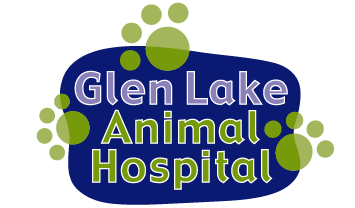Library
-
A gastropexy is a surgical procedure that is sometimes performed in large-breed dogs to prevent gastric dilatation and volvulus (GDV), also known as bloat – a life-threatening condition. This handout explains how the procedure works, how it is used preventatively and in emergency situations, risk factors, and post-operative care.
-
Gastrostomy tubes are placed through the skin of the abdomen into the stomach to enable long-term nutrition in dogs that either refuse to eat or are unable to chew and swallow food. A special liquid diet or homemade mixture liquefied with water will be recommended by your veterinarian. Step-by-step instructions are provided. The decision to remove the tube will be determined by your veterinarian.
-
Genetic (DNA) testing is readily available, whether you are using it for fun to find out what breeds your pet is made up of or if you are looking into possible medical conditions. DNA samples can be collected either from a cheek swab or a blood draw. Knowing which breeds your pet is made up of can help you and your veterinarian prevent or prepare for health issues in the future.
-
All dogs evolved from a common ancestor. Humans started breeding dogs for pleasure in the 19th century and this led to an intense diversification of dog species into the nearly 400 breeds recognized today. DNA tests can be performed on mixed-breed dogs to determine their breed ancestry.
-
Despite the huge variety in coat color, there are only two basic pigments that determine the color of canines: eumelanin (black) and phaeomelanin (red). All different variations in color are created by these two pigments, which are both forms of melanin. This handout discusses the details of genetics and coat color selection.
-
There are multiple methods of inheritance that determine which characteristics (or phenotypes) are displayed by the offspring, including autosomal dominant, autosomal recessive, and sex-linked inheritance. There are also many polygenic traits (i.e., associated with multiple genes) as well as environmental factors that make it much more complicated to predict disease or the likelihood of passing disease onto offspring.
-
Mutations are errors made during DNA replication. Mutations can be acquired as cells divide within the body or can be inherited if the parent's DNA contains a mutation. Genetic markers can be used to determine genetic heritage such as breed origins.
-
Deoxyribonucleic acid (DNA) is a long molecule that contains an animal’s entire genetic code. DNA is primarily located within the nucleus of each cell. In the nucleus, enzymes transcribe the DNA bases into a substance called RNA (ribonucleic acid), which serves as a messenger, taking the DNA message out into the cytoplasm of the cell where the RNA is translated into proteins. These proteins are responsible for a number of functions in the cell and throughout the body, primarily by acting as enzymes that regulate various cell reactions. DNA tests allow us to examine an animal’s DNA in order to see whether they carry certain genetic diseases. DNA testing can also be used to determine the ancestry of an animal.
-
Gentamicin + betamethasone ophthalmic is a steroid anti-inflammatory eye medication with antibiotic used for the treatment of external eye infections and inflammation of the eye in dogs. It is also sometimes used to manage pannus or pigmentary keratitis in dogs. It may be used off-label in cats and horses.
-
Gentamicin ophthalmic is used in the eye to treat bacterial infections and end-stage glaucoma. Side effects may include increased redness or eye irritation. Do not use this medication if your pet is allergic to it or has a full thickness wound to the eye. If a negative reaction occurs, call your veterinary office.
